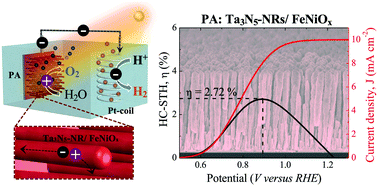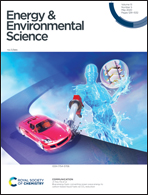Ta3N5-Nanorods enabling highly efficient water oxidation via advantageous light harvesting and charge collection†
Abstract
Efficient conversion of solar energy to hydrogen through photoelectrochemical (PEC) water splitting is a strategic and promising goal towards clean, green and sustainable fuel production. The most important task in PEC water splitting is the development of an efficient and stable photoanode with effective solar light absorption, generation and separation of free charge carriers, and charge carrier transport to the surface for the oxygen evolution reaction; however, such requirements are challenging to achieve simultaneously. Here we show that this problem can be solved in polycrystalline Ta3N5-nanorods (Ta3N5-NRs) that consist of aggregated single crystalline domains. The fabricated highly-conductive photoanode with large grain domains provides enhanced light harvesting because of the efficient generation and extraction of charge carriers, which leads to a completely saturated photocurrent of 9.95 mA cm−2 at 1.05 V (versus RHE) and delivers a solar energy conversion efficiency of 2.72% for single-photon photoanodes.



 Please wait while we load your content...
Please wait while we load your content...